
The earliest inhabitants of Manhattan, the Lenape and Munsee Indians, use the land around The Battery for hunting and fishing. A trading path is established from The Battery leading north through Manhattan. This wide roadway is called a “broad” way and continues today as the modern avenue, Broadway.
Giovanni da Verrazzano sails to the New World under the patronage of the French king, Francis I. In his account of the journey, Verrazzano writes the first descriptions of New York Harbor and future Battery calling it “a very agreeable site located between two hills between which flowed to the sea a very great river.”
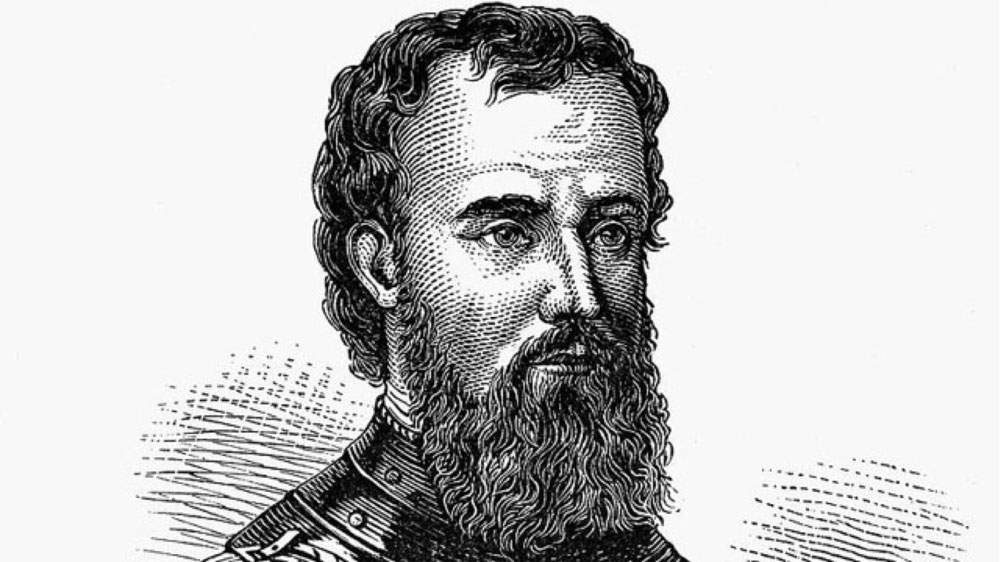
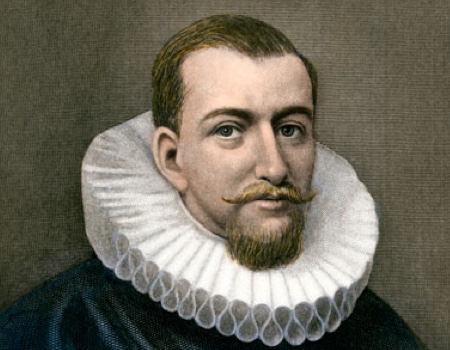
The Englishman Henry Hudson sails into New York Harbor aboard the Dutch East India Company’s ship, Halve Maen (The Half Moon). His exploration of what is now New York and its potential for beaver trapping and trading inspires future Dutch commercial expeditions and early settlement.
On behalf of the Dutch West India Company, Peter Minuit barters with the Lenape to “purchase” the island known as Manahatta, in an exchange worth roughly 60 guilders at the time. The Lenapes had no concept of “selling” the land. They considered themselves stewards, not owners, of the island, and believed they were now sharing it with the Dutch. Minuit’s negotiations with the Lenape were likely conducted at what is now The Battery.
Minuit serves as Director General of the Dutch colony of New Amsterdam from 1626 to 1631.
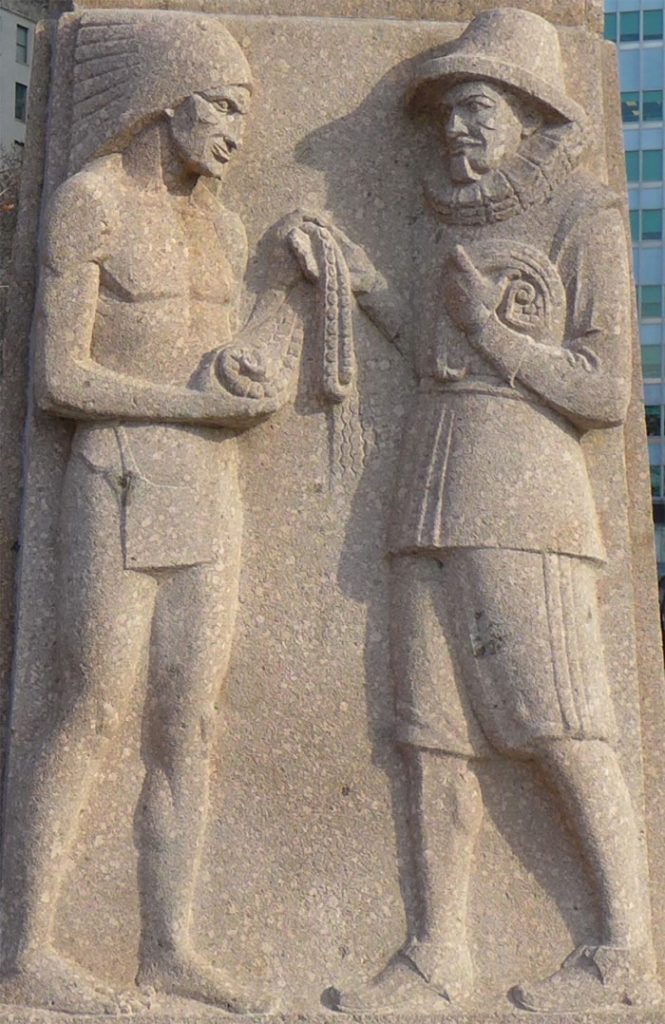
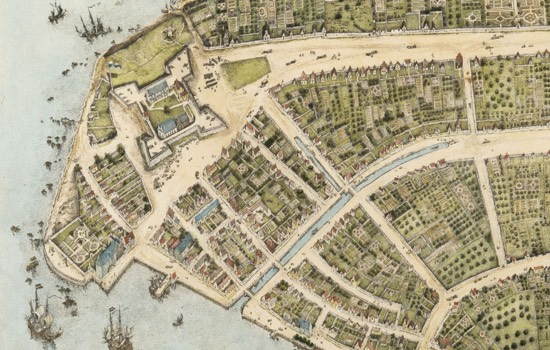
Fort Amsterdam is built on the shores of The Battery. It serves for thirty-eight years as the administrative headquarters for the Dutch West India Company.
The British sail to New Amsterdam with four ships and demand the settlement’s surrender by Director Peter Stuyvesant. In 1665, just before the Second Anglo-Dutch War, the British rename the colony New York, after the Duke of York.
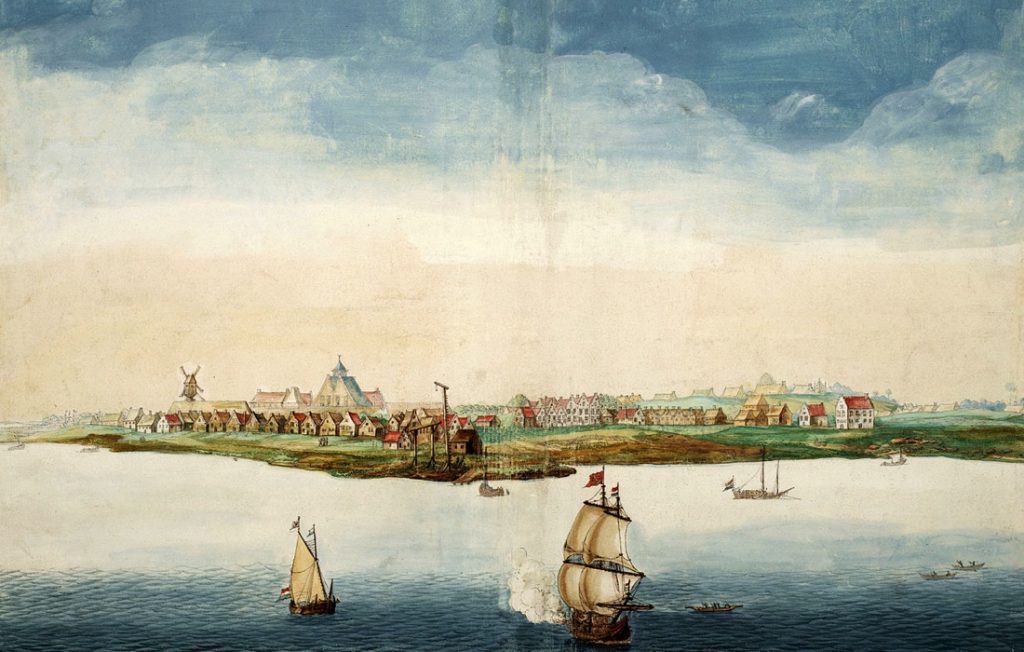
After several name changes over the decades, the fort situated at The Battery is named Fort George, which it will remain until its destruction in 1790.
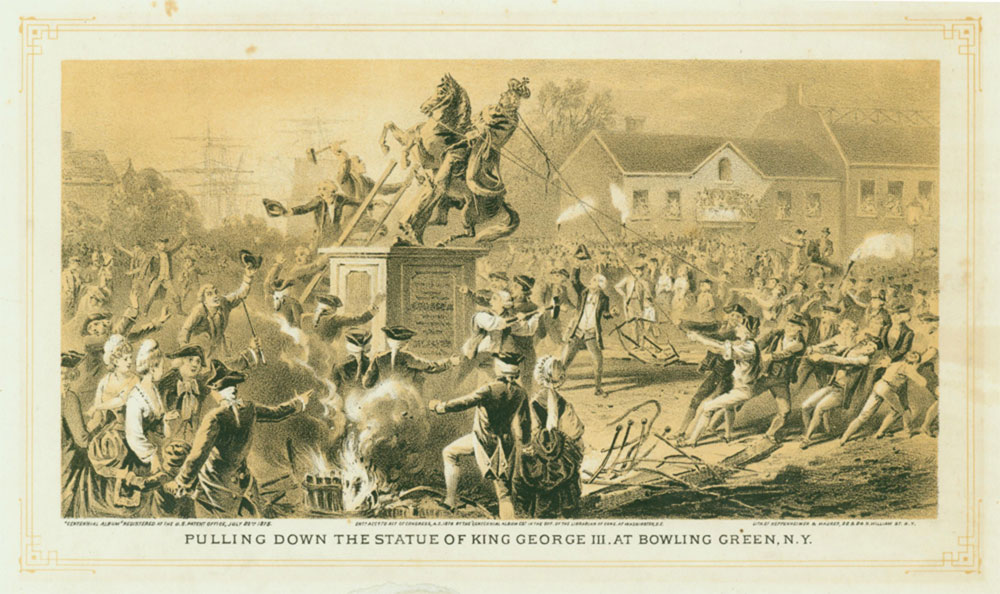
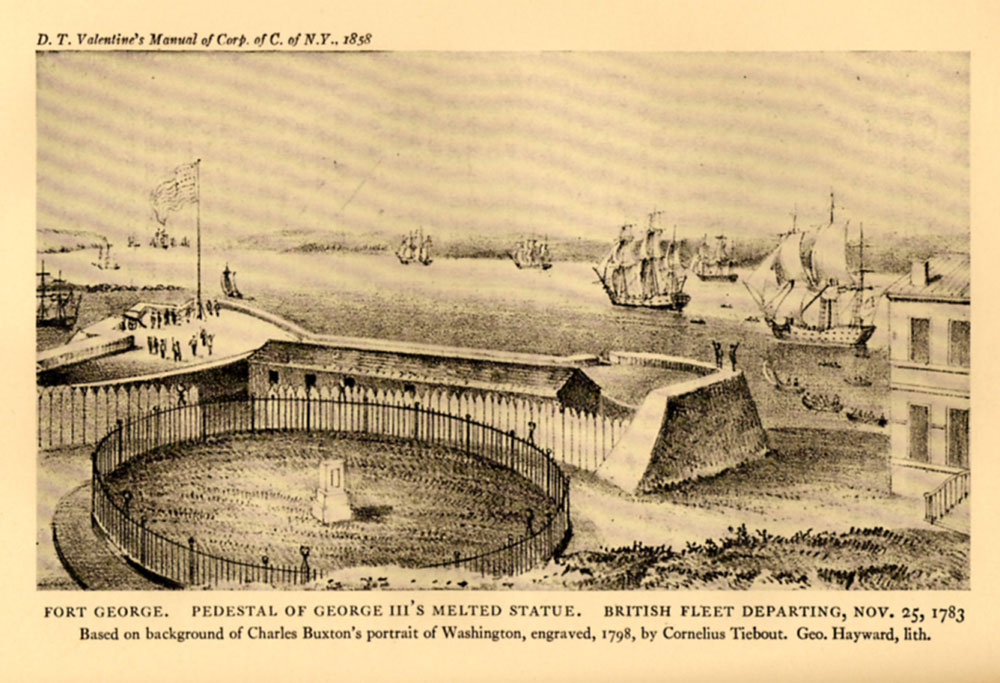
Fort George and The Battery are occupied by the Continental Army under the leadership of General George Washington. Following Washington’s public reading of the Declaration of Independence on July 9, about a mile north, Americans destroy a statue of King George III at Bowling Green, adjacent to the fort.
Following the end of the Revolutionary War, the fort’s remains are demolished, and The Battery is transformed into a public promenade for walking and leisure.
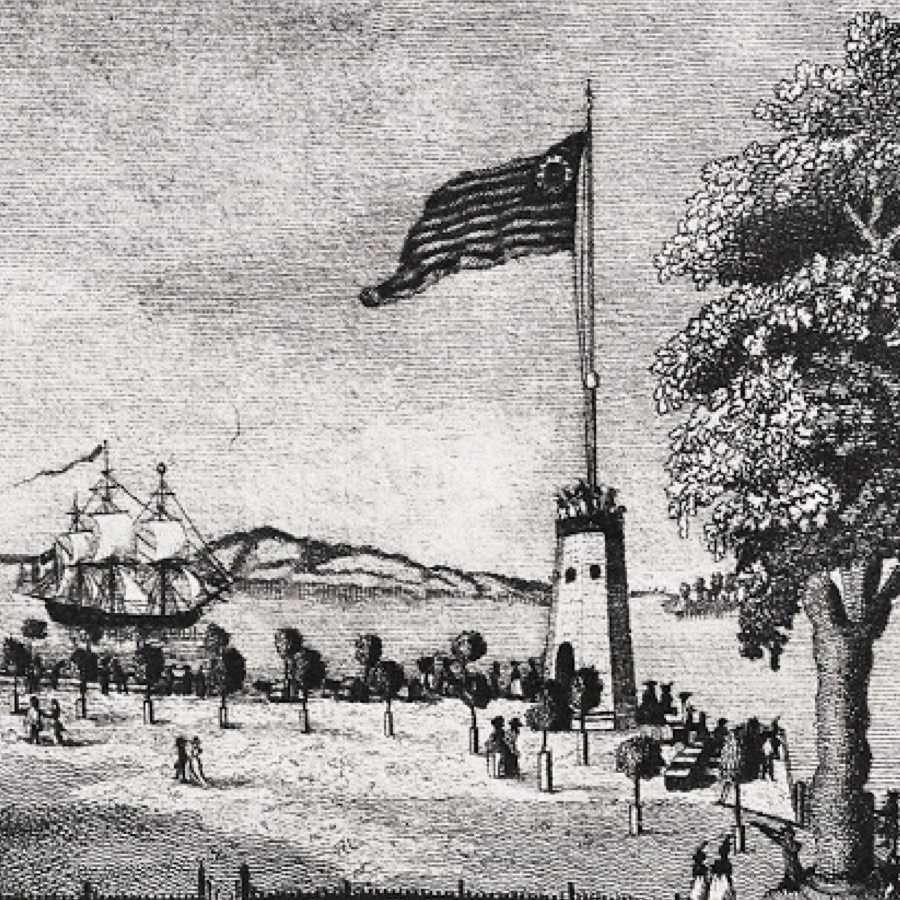
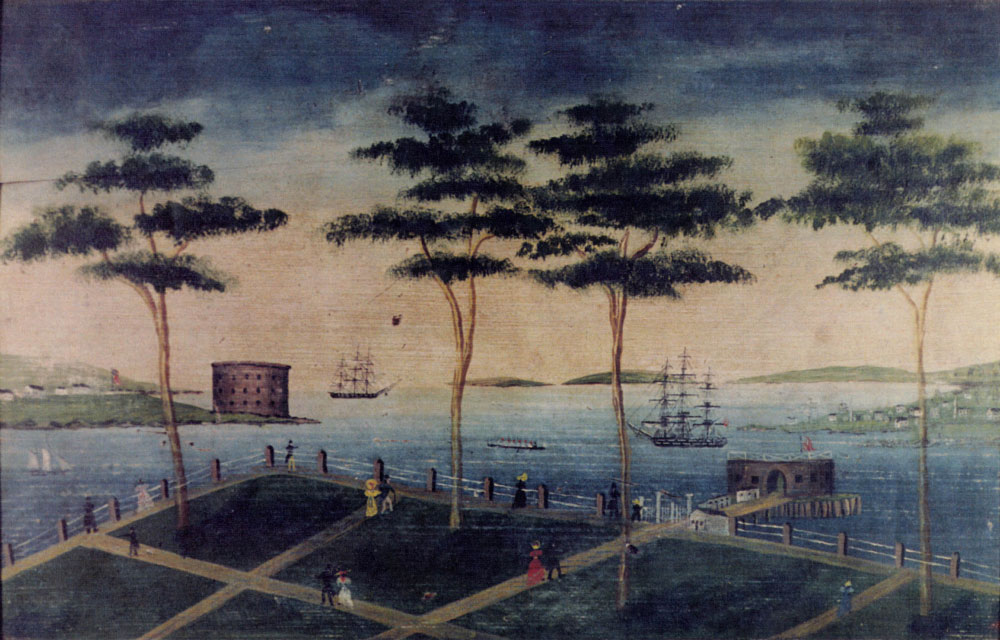
In preparation for future British invasion and war, New York City cedes land at The Battery and around the city’s coastline to build five new forts to protect New York Harbor. Among these, Castle Clinton at The Battery, Castle Williams on Governors Island, and Fort Wadsworth on Staten Island still stand today.
Congress bans the importation of slaves to the U.S. New York City’s Wall Street slave market had closed in 1762. Slavery is abolished in New York in 1827.
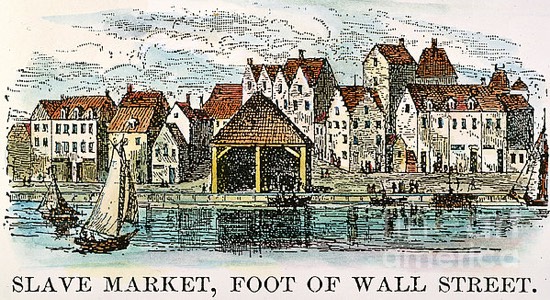
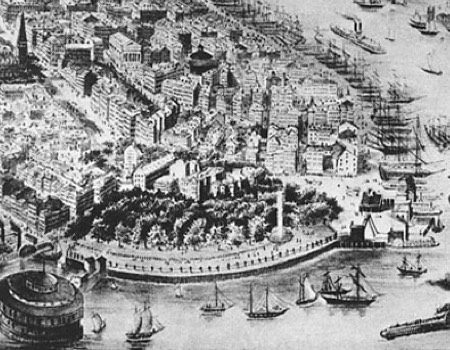
Under the direction of engineer Jonathan Williams, construction is completed on the fort called the West Battery. It was built on a manmade island 300 feet from the shore, connected to Manhattan by a wooden bridge, and armed with 28 cannons pointed out to sea.
In response to British aggressions, including the seizure of American trading ships and arming of Native American populations, the U.S. declares war. During the War of 1812, the nation survives the burning of Washington DC. New York Harbor is not invaded, and military aggression is never seen at the West Battery.
The West Battery is renamed Castle Clinton in honor of DeWitt Clinton, Governor of New York (1817-1822 and 1825-1828) and the former mayor of New York City (1803-1815).
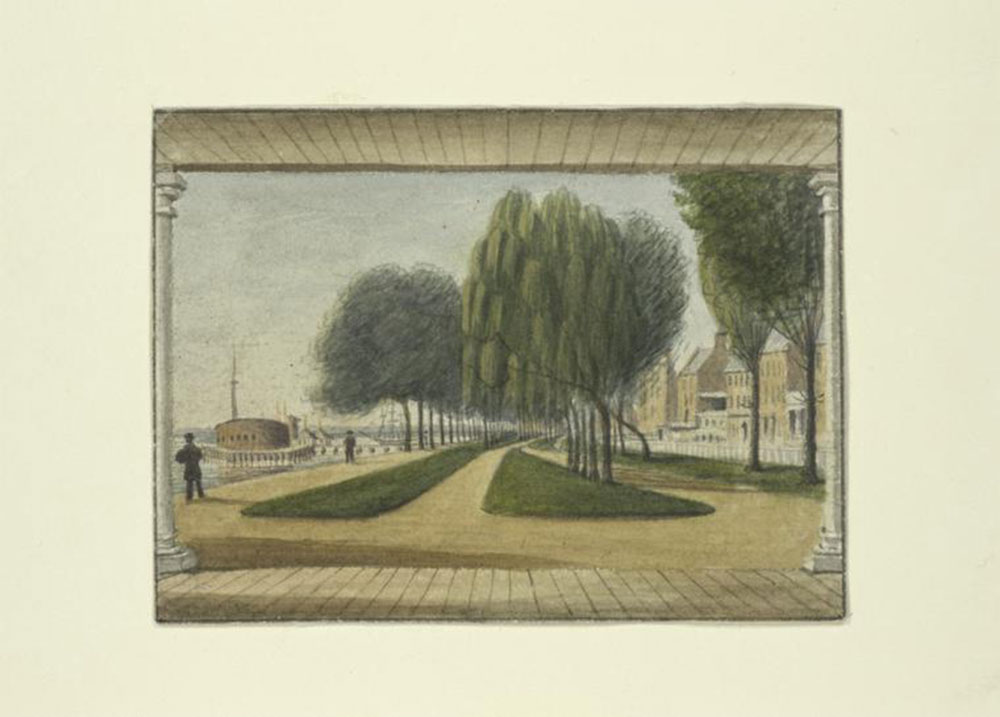
The federal government decommissions Castle Clinton as a military base and leases the site to the City of New York.
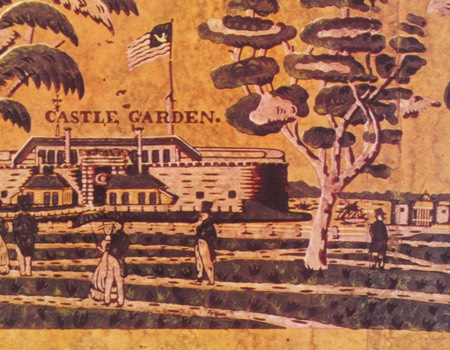
Newly renamed “Castle Garden,” the building opens to the public as an amphitheater on July 3. It presented Eugene Robertson’s hot air balloon ascension in 1825. In addition, a series of circus performances delighted thousands of children and their families. Over the next thirty years the building is expanded to include a second floor, a roof, a fountain, and enhanced with gaslights. It functions as an opera house and theater, with a rooftop promenade.
The Marquis de Lafayette, hero of the Revolutionary War, arrives on August 16th aboard the steamship Chancellor Livingston. The last living general of the war was greeted by a crowd of over 50,000 and paraded through the city before embarking on a year-long tour of all 24 states.
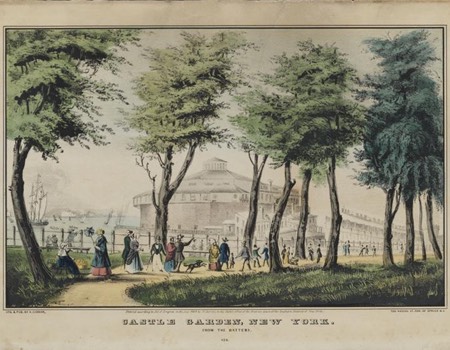
Samuel Morse performs an early demonstration of his new telegraph machine using cable strung for two miles between Castle Garden and Castle Williams on Governors Island. Castle Garden was the site of many other landmark demonstrations including the first self-propelled steam fire engine (1841) and Samuel Colt’s first underwater explosives (1842).
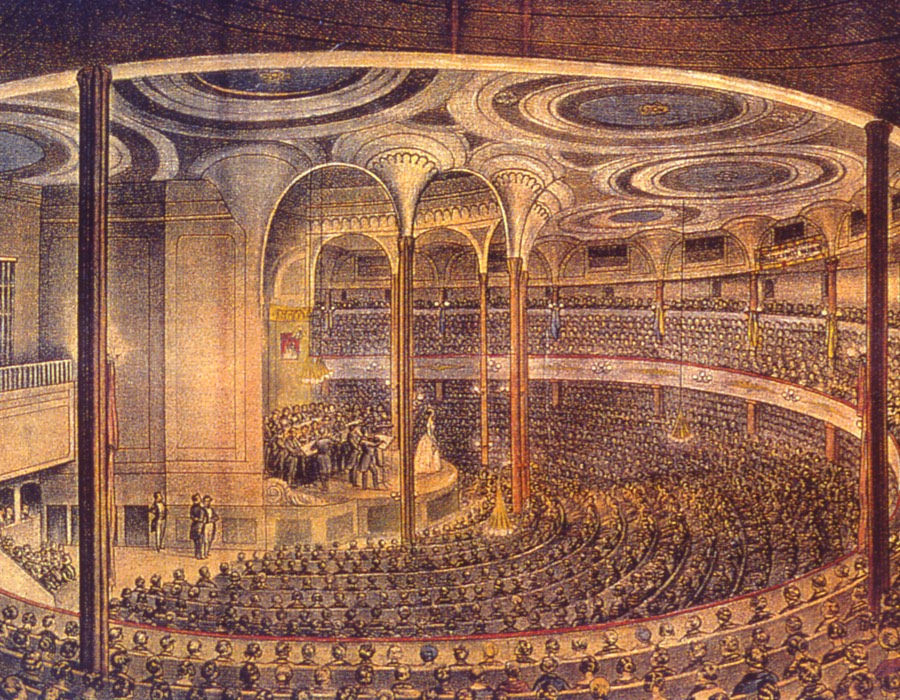
Castle Garden becomes one of the premier sites for arts and entertainment in the city. The soprano Jenny Lind is brought to New York by famous showman P.T. Barnum on September 11. Known as the “Swedish Nightingale,” she is greeted by an audience of over 5,000 people.
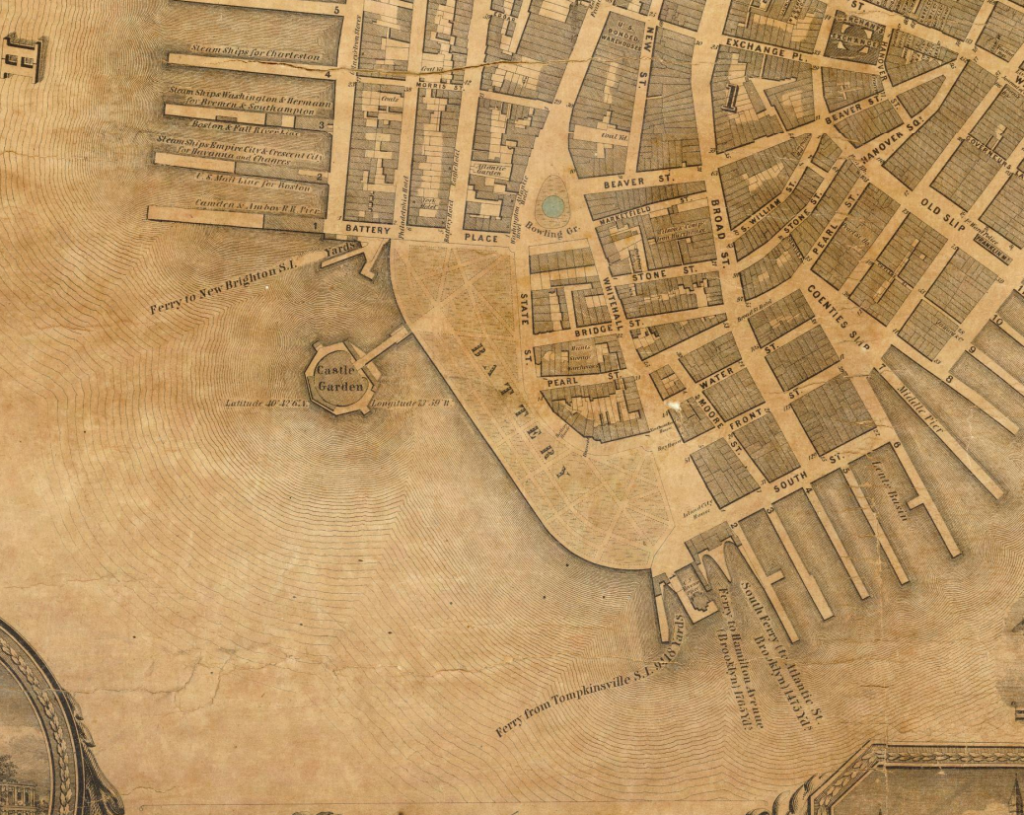
Matthew Dripps 1852 map of New York City captures the historic Castle Garden.
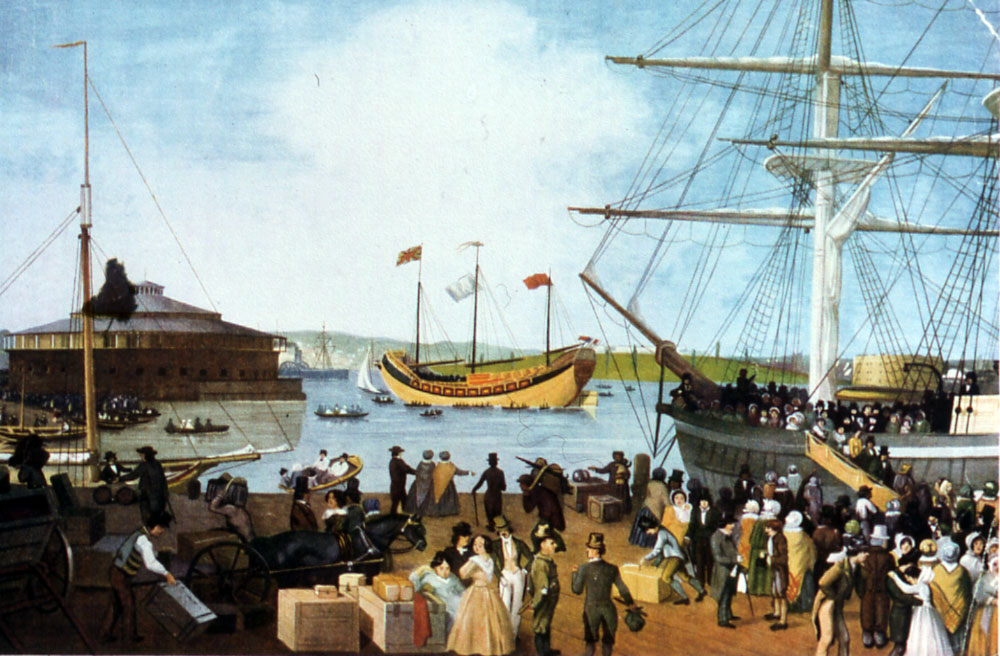
Landfill is used to connect Castle Garden island to the mainland and the area is surrounded by a 13-foot-high fence. The State of New York establishes the Emigrant Landing Depot in the building. Over the next 35 years, 8 million immigrants are processed here. Among the notable Americans to pass through Castle Garden are Nikola Tesla, Harry Houdini, Emma Goldman, and Joseph Pulitzer.
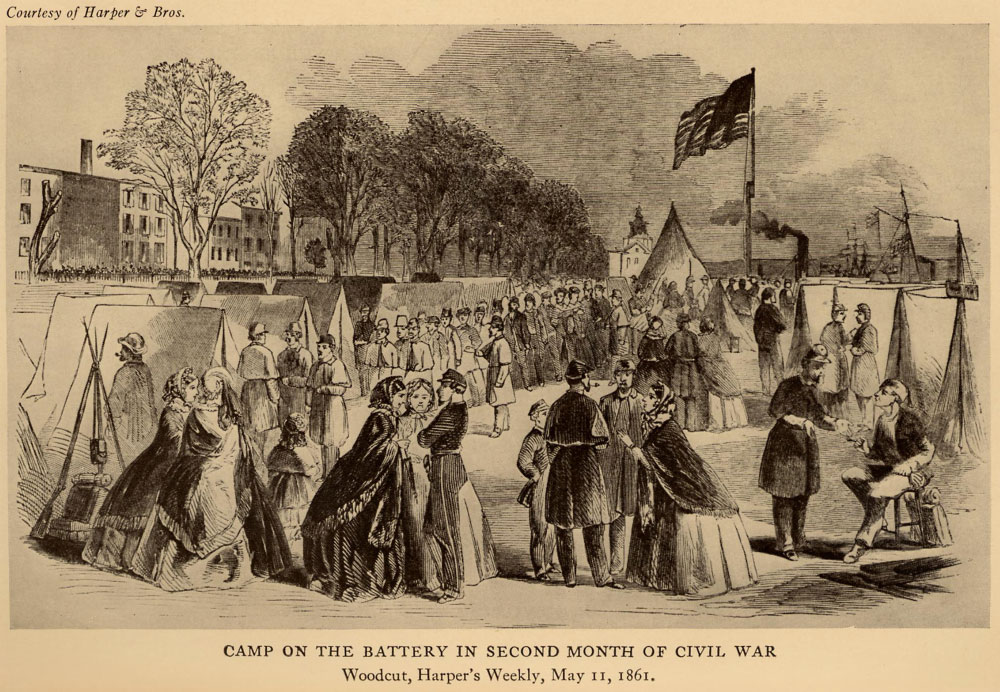
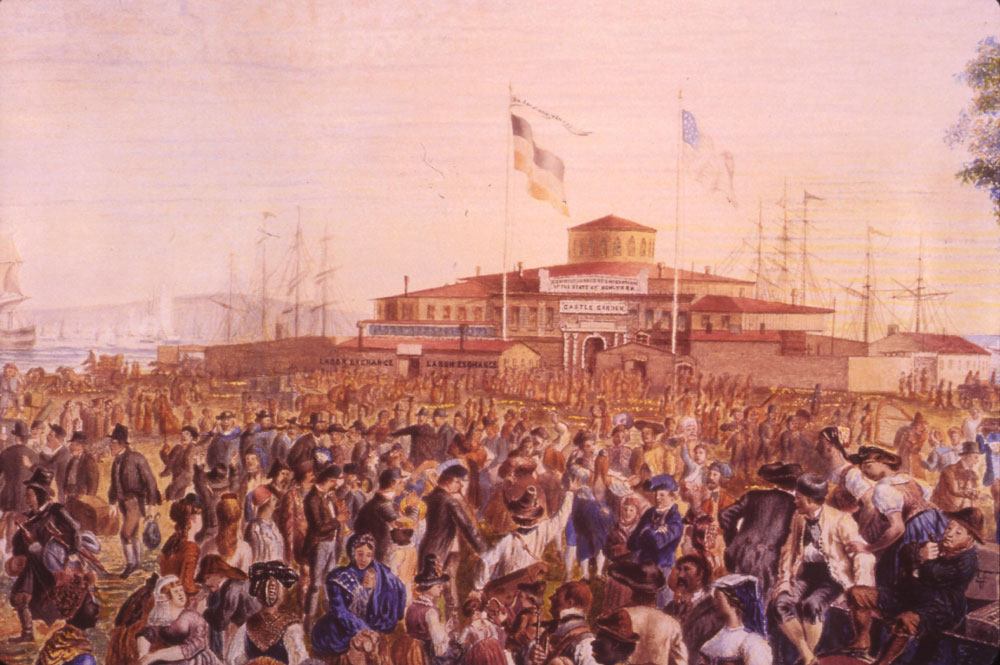
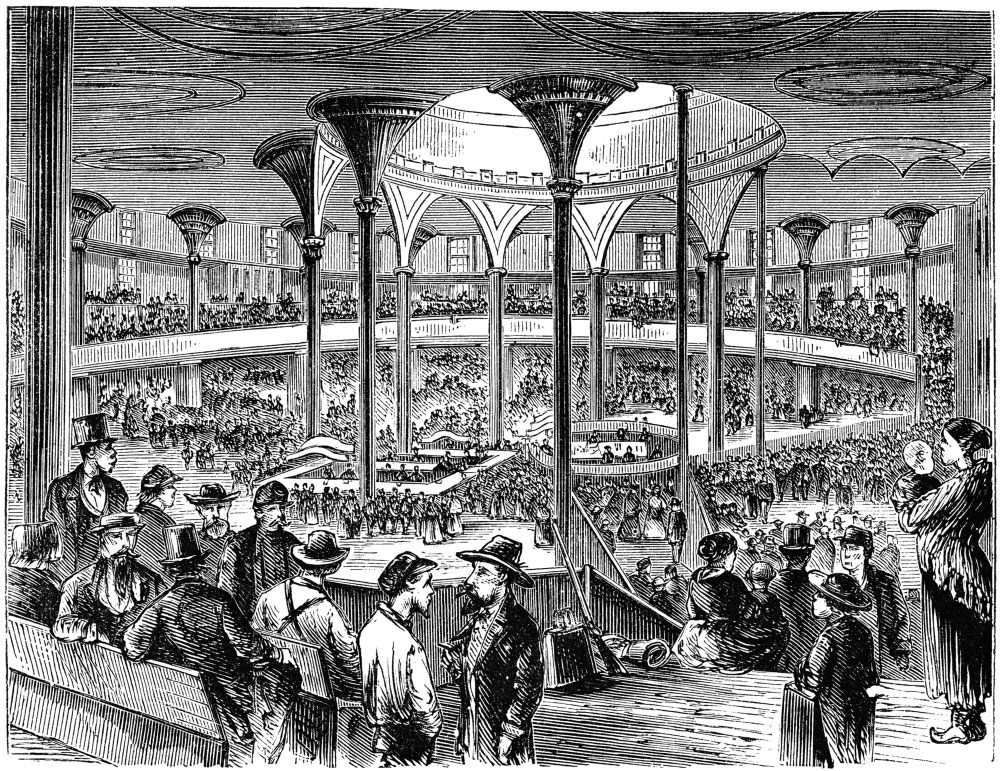
The U.S. government assumes control of immigration. Until the completion of new facilities on Ellis Island, the Barge Office in The Battery serves as the first federal processing center for immigrants.
Ellis Island opens as the U.S. immigration center. After a fire destroys the buildings on the island in 1897, operations are returned to the Barge Office until the completion of fireproof buildings in 1900. Between 1892 and 1954, 12 million people will enter the US through Ellis Island.
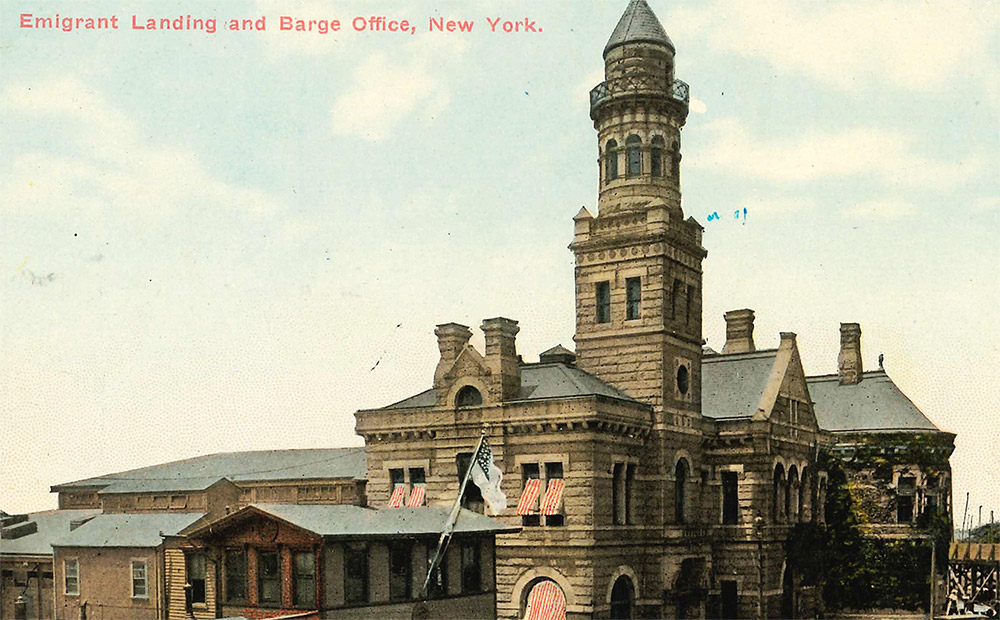
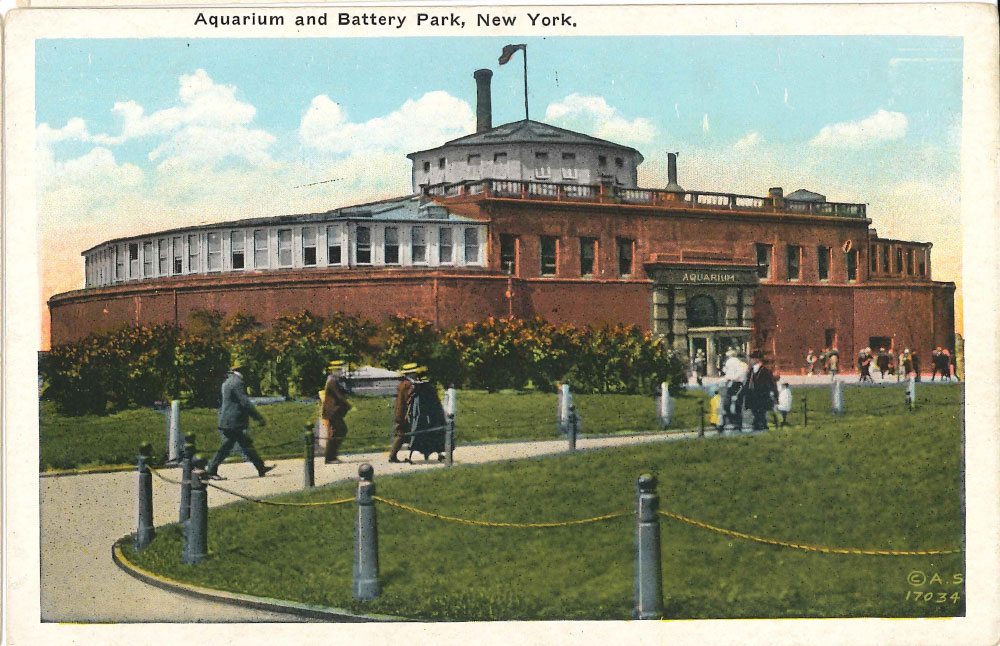
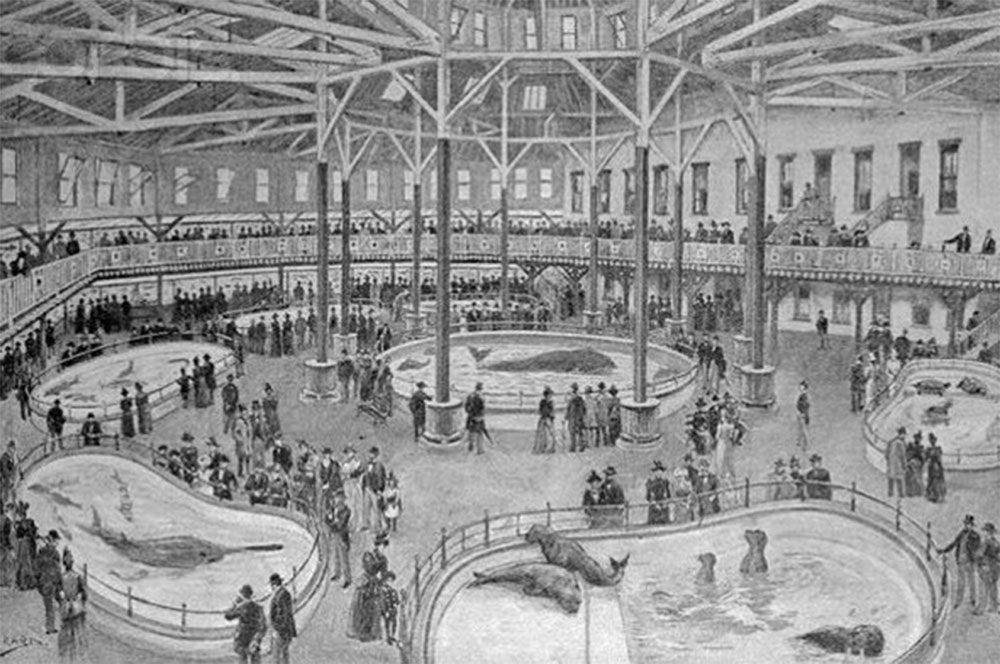
Castle Garden is renovated by powerhouse New York architectural firm McKim, Mead, and White and reopens as the New York Aquarium. Open pools and towering glass tanks containing over 300,000 gallons of water hold exotic fish and other undersea specimens from around the world.
Charles Lindbergh returns from his historic non-stop flight from New York to Paris to a ticker tape parade from The Battery to City Hall. Pinning a medal to Lindbergh’s chest, Mayor Jimmy Walker tells him, “Colonel Lindbergh, New York City is yours. I don’t give it to you. You won it.”
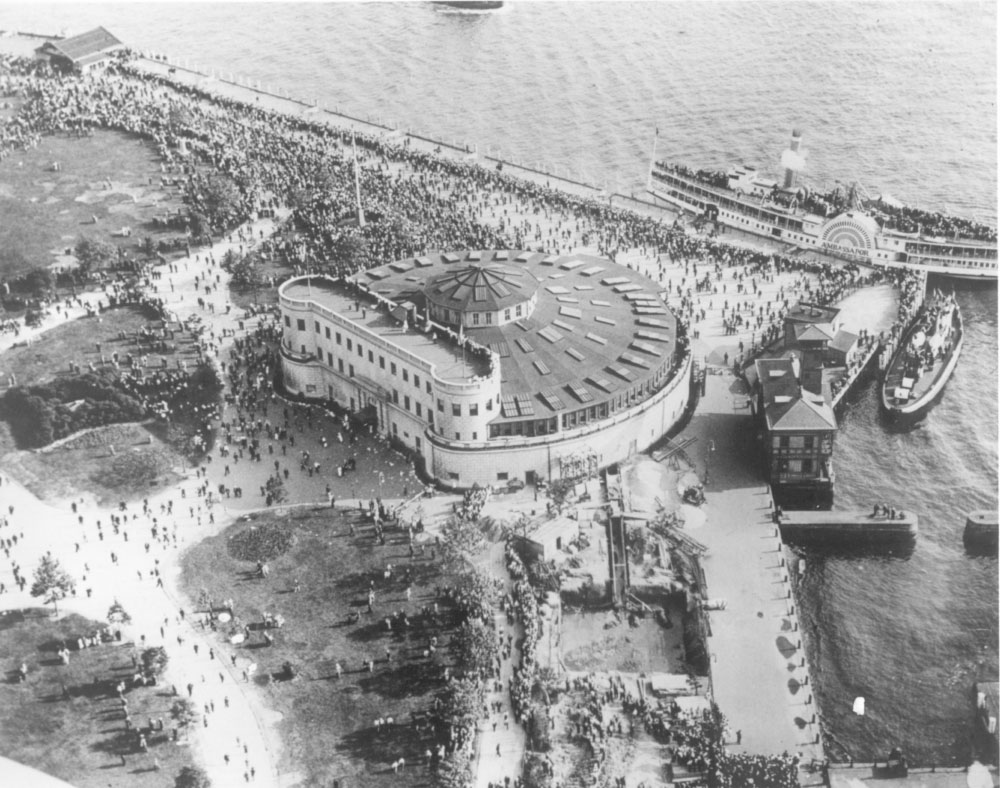
This is the final phase of the Castle as a cultural and educational magnet, the Castle as an essential part of every New Yorker’s life.
New York’s master builder Robert Moses introduces controversial plans to build a bridge from The Battery to Brooklyn. Local residents and preservationists, with the support of New York natives. Eleanor and President Franklin Roosevelt protest the development. They succeed in persuading the city to construct a tunnel under the East River to Brooklyn instead of the bridge.
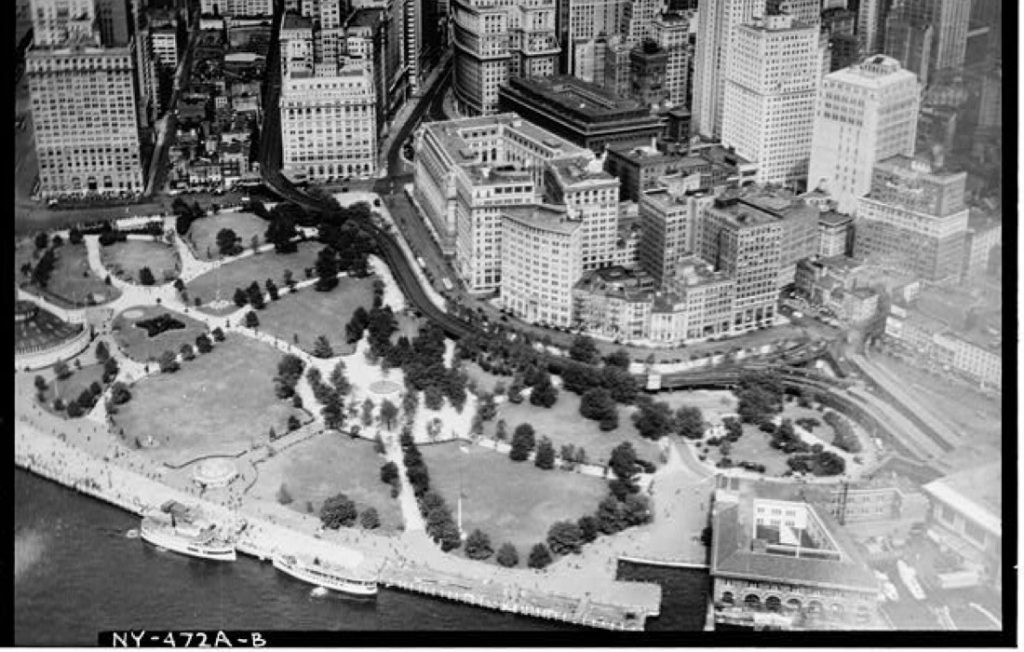
The New York Aquarium is closed and construction on the Brooklyn-Battery Tunnel begins. Interrupted by WWII, the tunnel is completed and opened to the public in 1950. Robert Moses calls for the destruction of the aquarium building, describing it as “an ugly wart on the main axis leading…to the Statue of Liberty.”
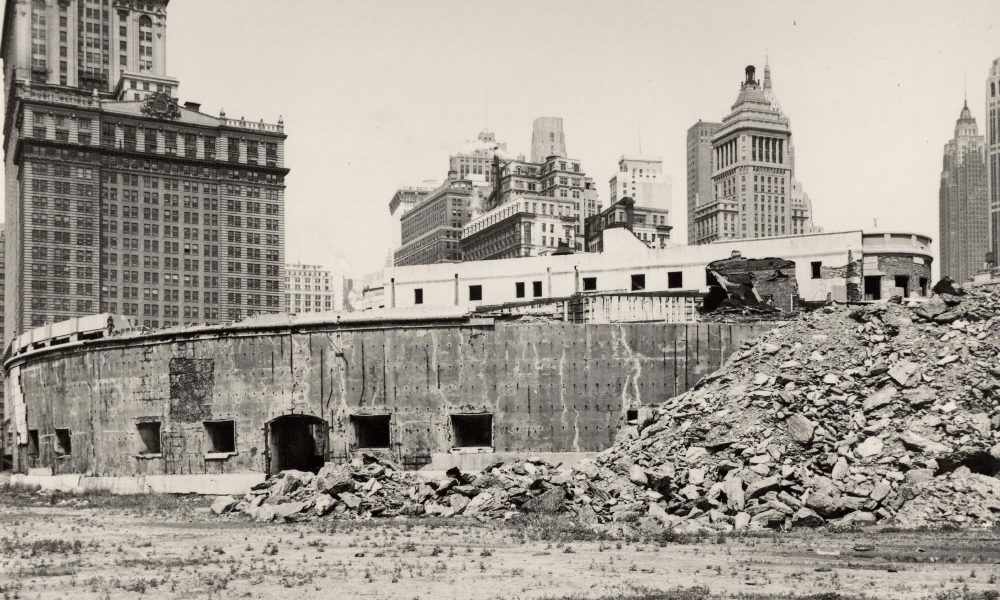
After strong protests by historic preservationists, demolition of the aquarium building is finally halted by the outbreak of World War II. Only the outer stone walls are left standing.
On August 12, the U.S. Congress passes a bill, signed by President Harry Truman, authorizing the Department of Interior to declare Castle Clinton a National Monument. Demolition is halted. On July 18, 1950 Governor Dewey formally cedes control of the site to the federal government.
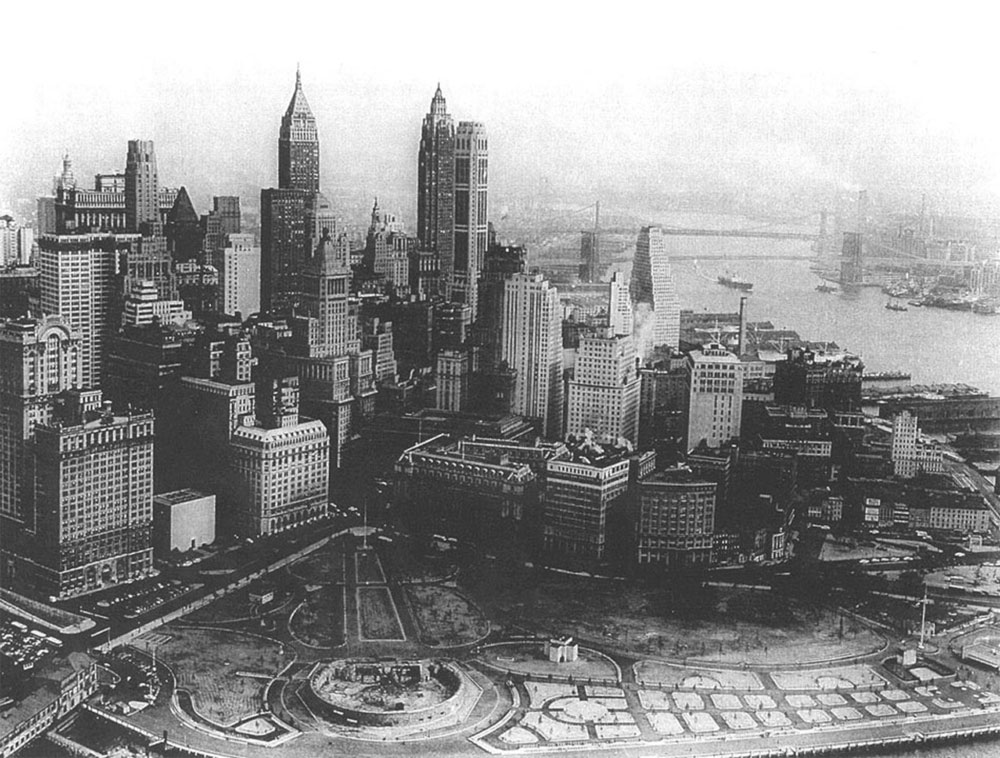
On October 15, 1966 Castle Clinton National Monument is added to the National Register of Historic Places.
A 3-year, $750,000 project by the National Park Service restores Castle Clinton National Monument to its early, military appearance and reopens the site to the public. An anniversary performance of Beethoven’s 9th Symphony, first performed in America by the New York Philharmonic at Castle Garden in 1846, is held to mark the occasion.
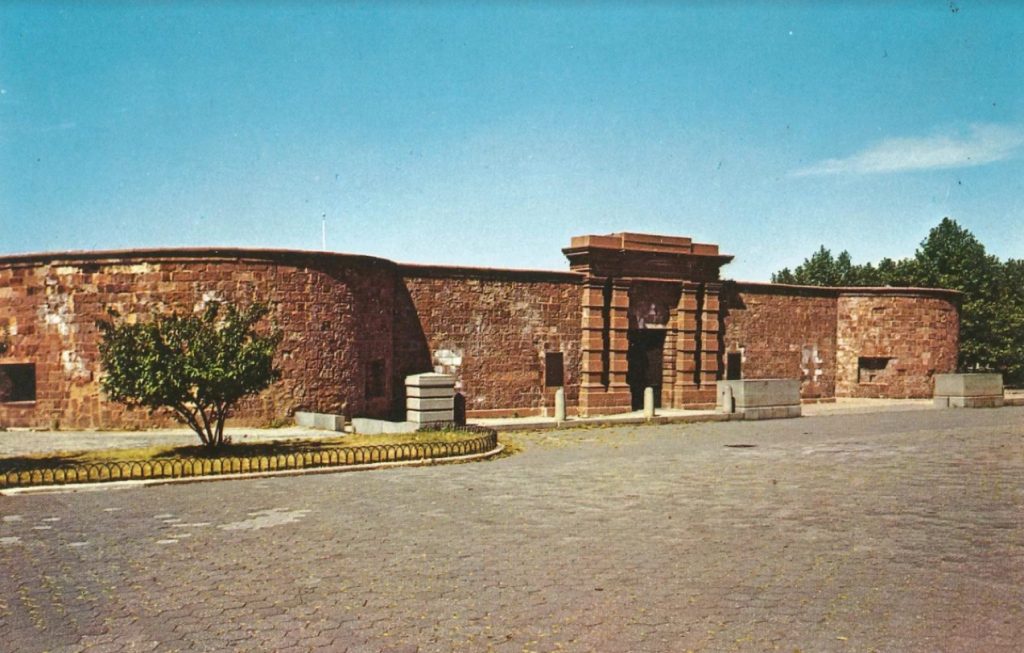
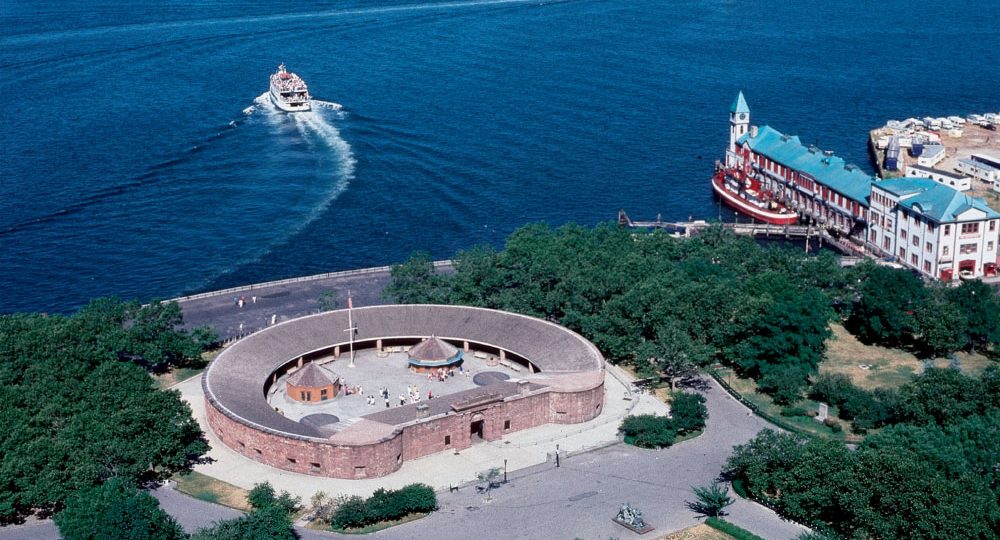
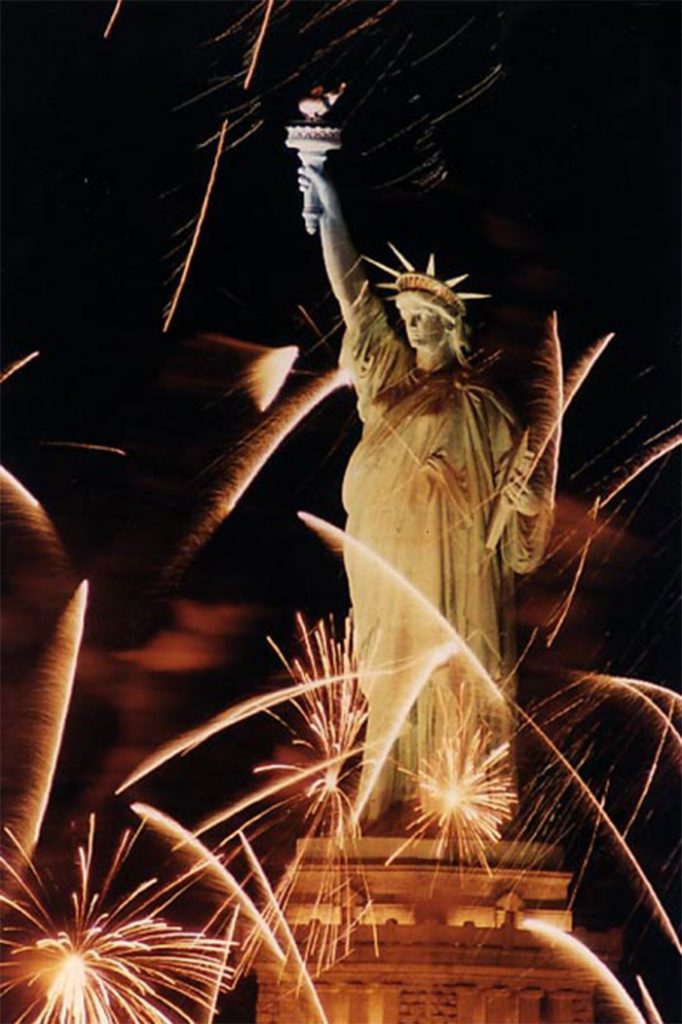
The National Park Service engages a concessionaire for transportation to the restored Statue of Liberty. Ferry tickets begin to be sold for the Statue of Liberty. In 1990, Ellis Island opens to the public. Millions of visitors pass through Castle Clinton each year to tour these sites.
A master plan for Battery Park (later returned to its historic name “The Battery) by landscape architect Philip Winslow, is accepted by the New York City Department of Parks and Recreation and approved by the New York City Arts Commission.
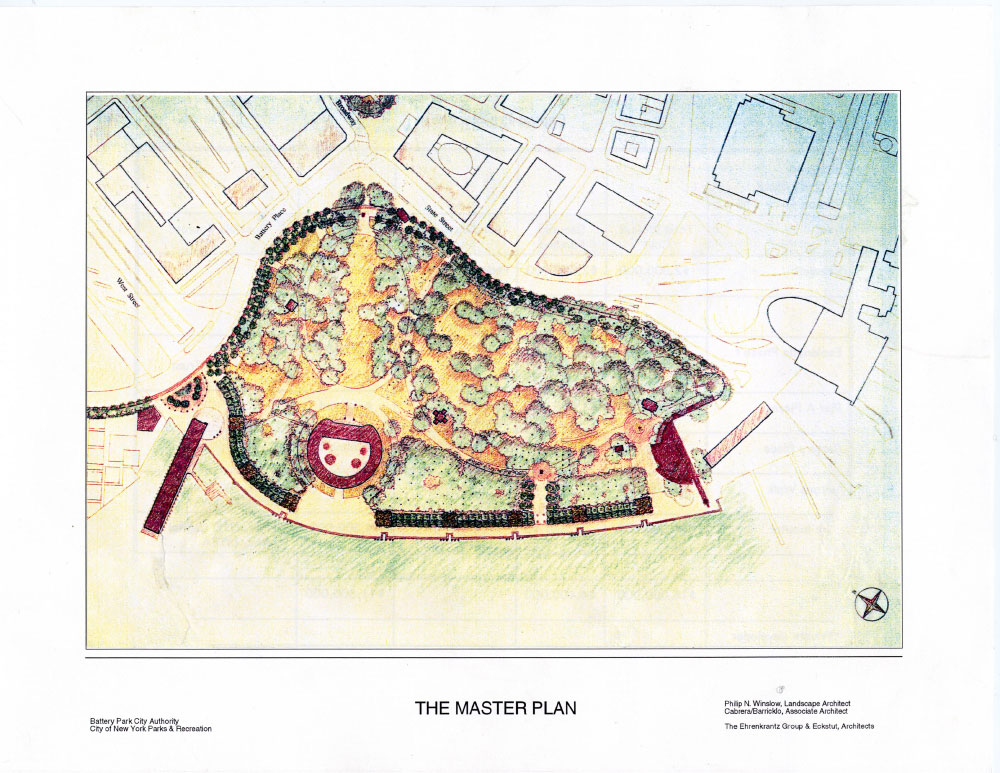
Elizabeth Barlow Rogers, Founder of the Central Park Conservancy, the first public/private partnership created to rebuild and maintain NYC park land, encourages Warrie Price to found a conservancy to implement the Battery Park master plan.
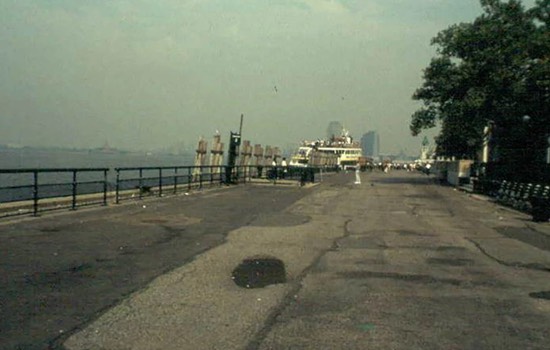
The Battery Conservancy (TBC) is founded to rebuild and revitalize the park and its major landmark, Castle Clinton National Monument. The park had become dilapidated, downtrodden and overlooked as a sought-after destination.
The Battery Promenade is rebuilt. The new seawall railing incorporates “The River that Flows Two Ways” with its public art sculptural panels by Wopo Holup.
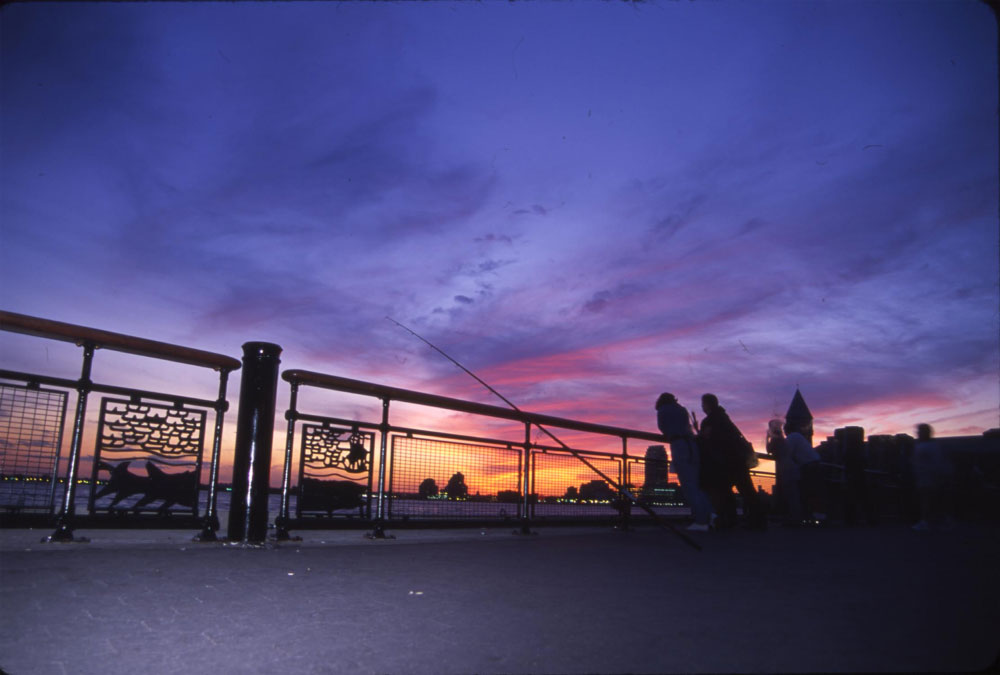
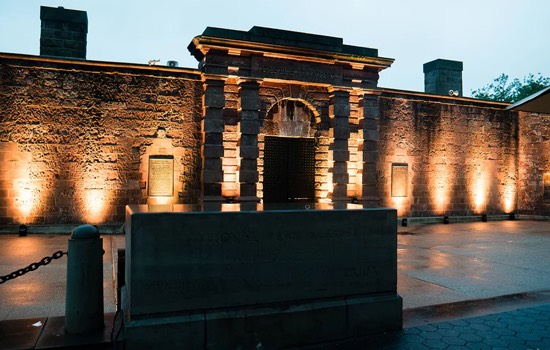
Senator Daniel Patrick Moynihan secures $6M in federal funds to transform Castle Clinton into a 21st-century performance venue, returning it to the role it played in Lower Manhattan life as Castle Garden.
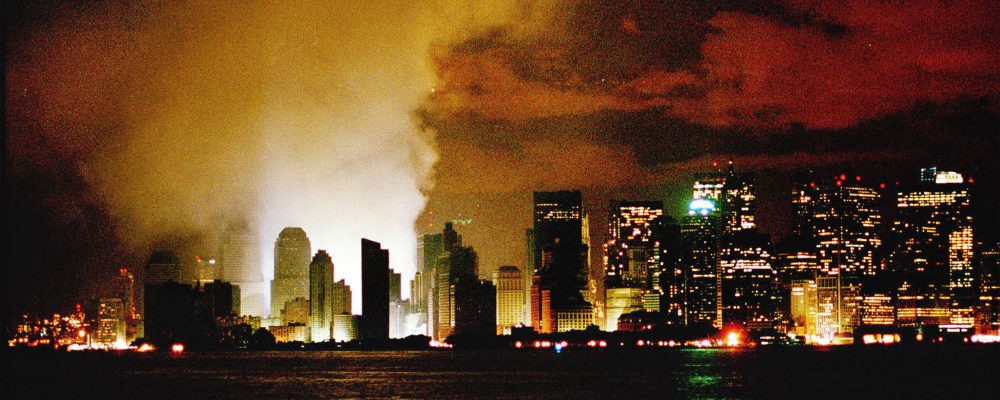
On September 11th, The Battery’s shoreline serves as a survival route for those fleeing Lower Manhattan. In December, The Battery’s Gardens of Remembrance are dedicated within the newly completed Upper Promenade.
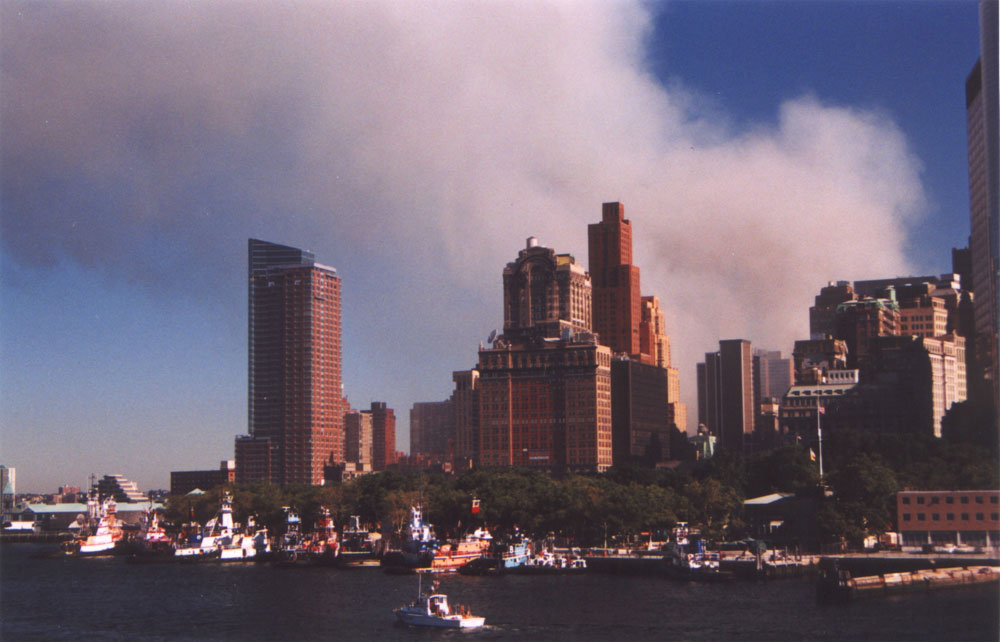
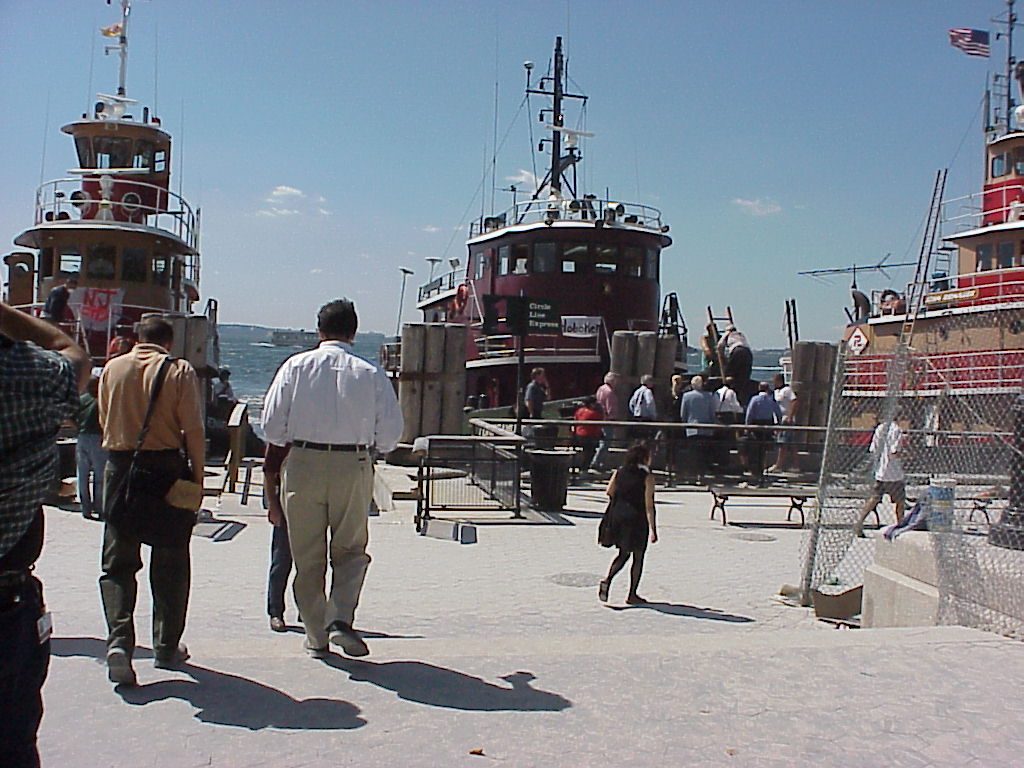
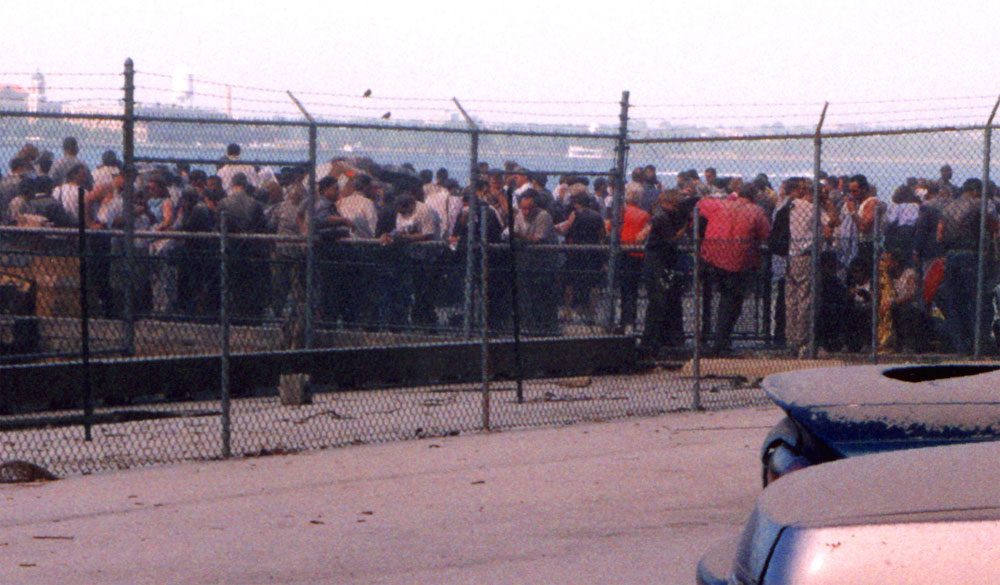
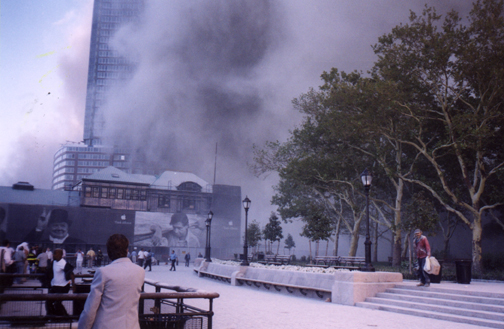
The Metropolitan Transportation Authority (MTA) proposes to site the new South Ferry subway station within the park’s bucolic woodland. TBC leads the fight for the park’s survival.
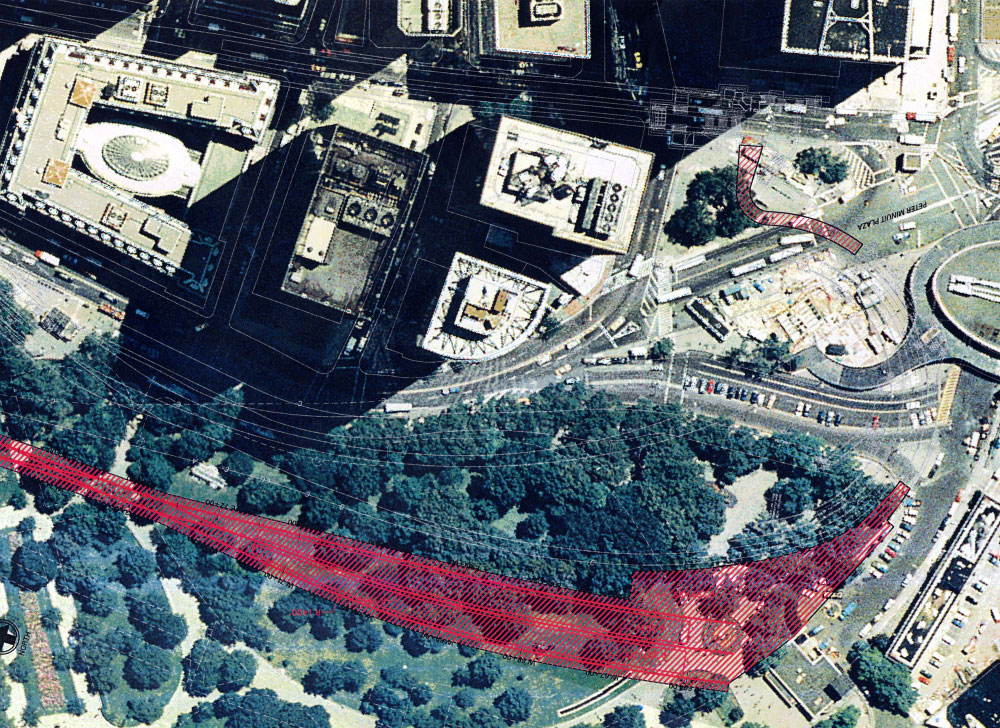
Governor George Pataki announces that the new South Ferry subway station will occupy space adjacent to the Whitehall Terminal serving the Staten Island Ferry. The Battery Woodland is saved.
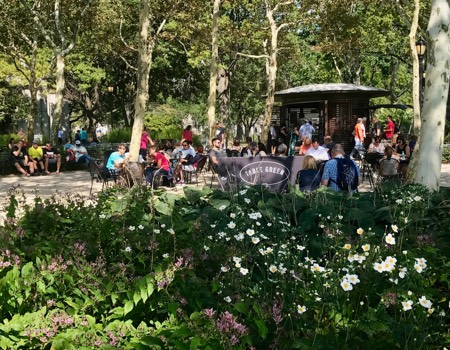
The four-acre Bosque (Spanish for a grove of trees) is opened to the public with a majestic fountain, vast perennial gardens and two food kiosks.
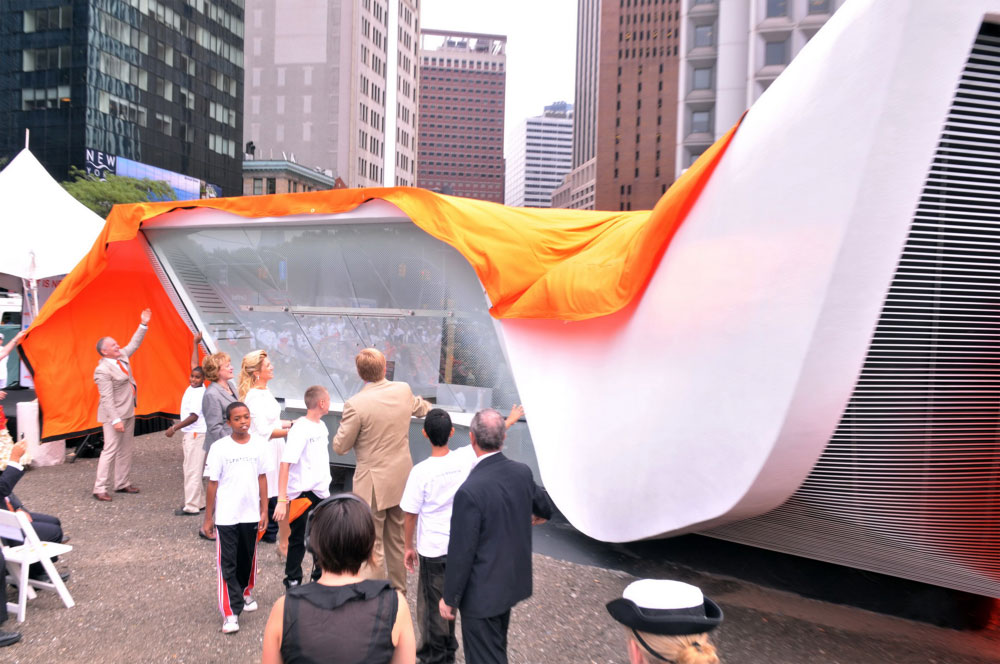
The Kingdom of the Netherlands celebrates the 400th anniversary of Henry Hudson’s arrival in New York Harbor with the gift of The New Amsterdam Plein and Pavilion sited on Peter Minuit Plaza.

TBC creates The Battery Urban Farm to educate students about urban farming and healthy eating. More than 5000 students visit the farm every year, with hundreds growing their own food organically.
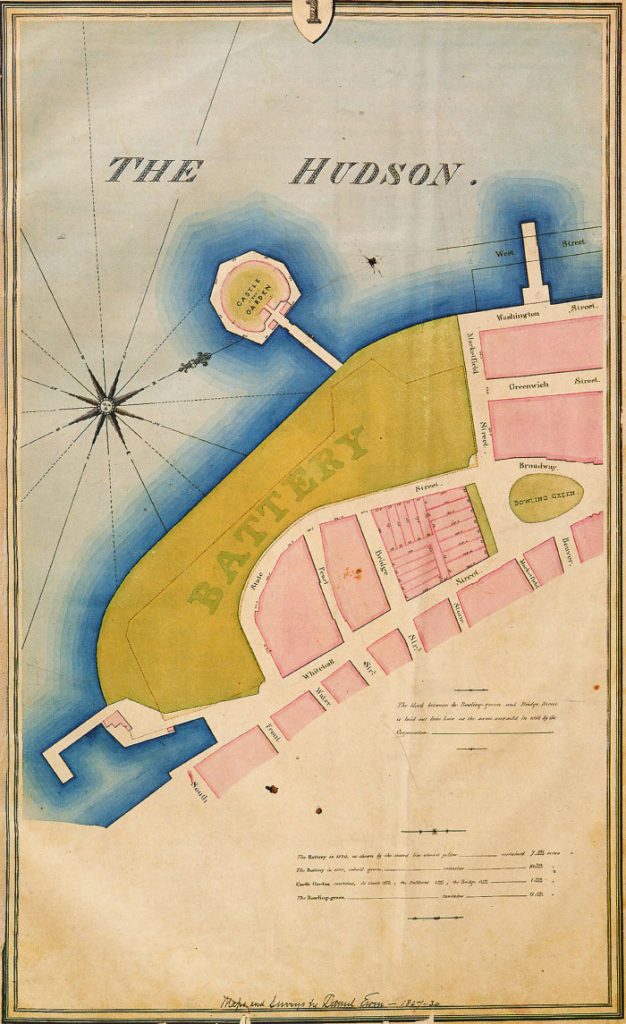
New York City Parks Commissioner Mitchell Silver reinstates the historic name “The Battery” to the 25-acre tip of Manhattan, previously referred to as Battery Park.
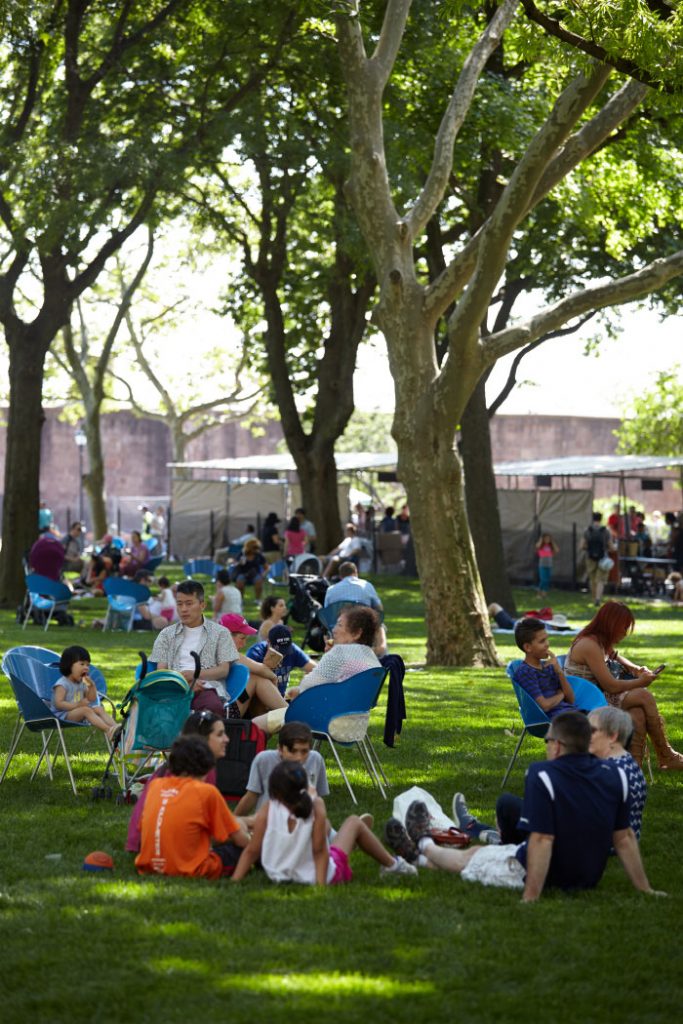
The Battery Oval opens to the public with 90,000 square feet of lawn and 300 moveable chairs, commissioned by TBC for this unique site.
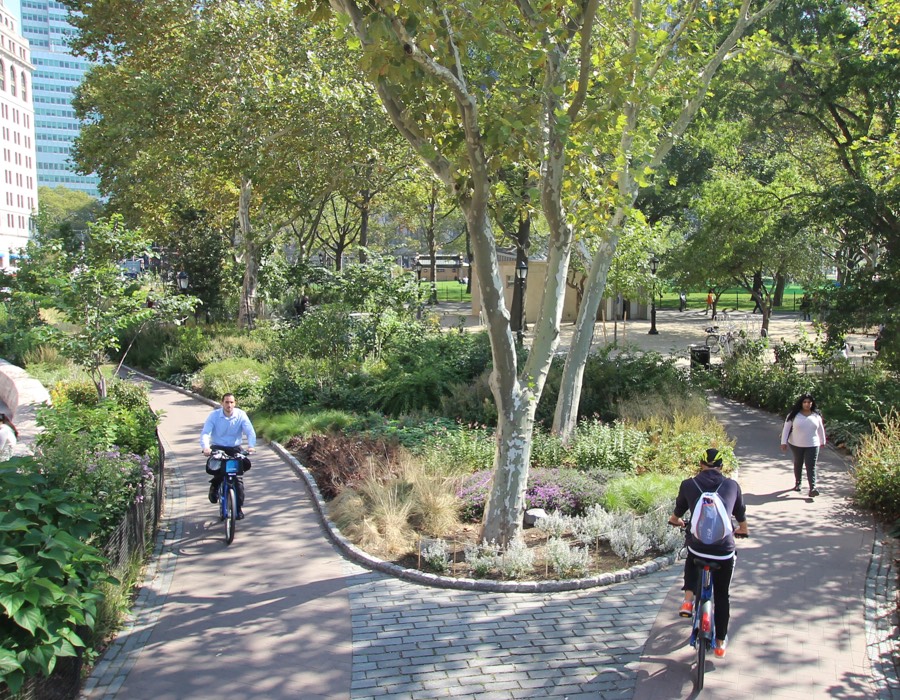
The Battery Bikeway opens to the public, connecting Hudson River Park to the East River Esplanade.
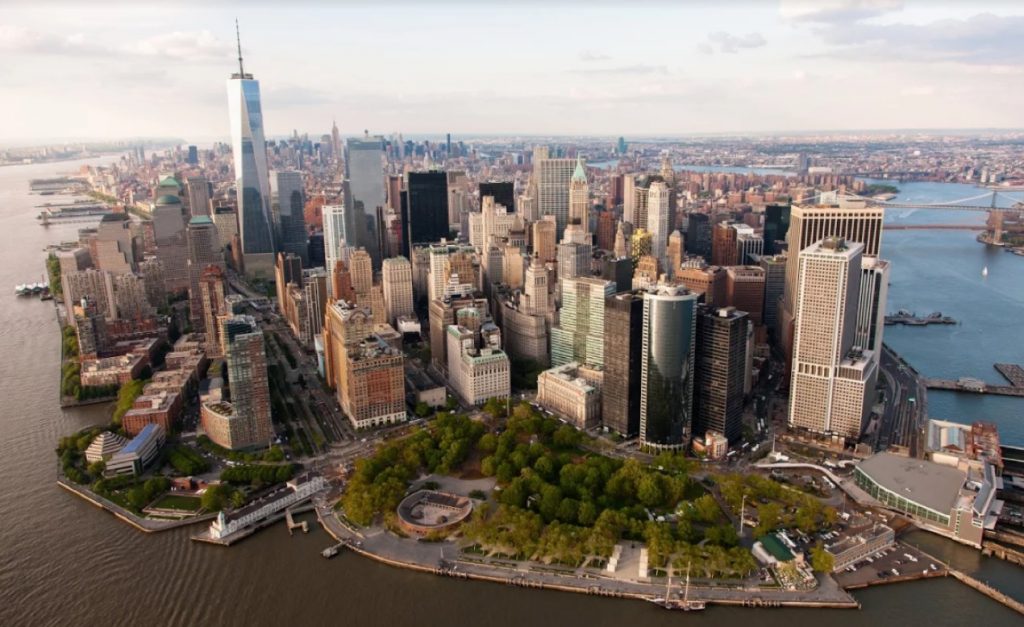
The Battery is maintained and programmed by TBC. The National Park Service operates Castle Clinton, which now hosts a historic exhibit and ferry ticket sales to Statue of Liberty and Ellis Island. Restoration and public development plans at The Battery and the Castle are ongoing. These important sites continue to evolve to attract, engage, instruct, and entertain New Yorkers and millions of visitors from around the world. Link to the Destinations page
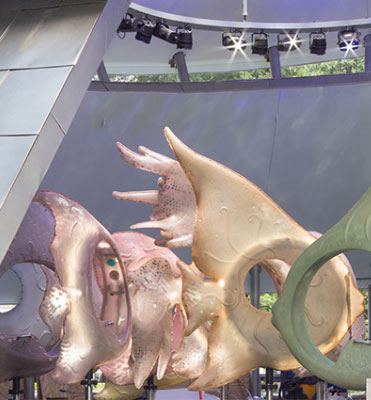
The Battery Conservancy and design team of WXY architecture + urban design conceived and led the development of SeaGlass Carousel to provide children and adults a virtual underwater experience.
Learn More
Visited by over 7 millions people each year, The Battery was the first New York City public park to introduce a horticultural landscape without fences or an admission fee.
Learn More
The Battery Conservancy created Battery Urban Farm to engage students, residents, and visitors in sustainable farming techniques, the joys of tasting new foods, and environmental stewardship.
Learn MoreReceive news about upcoming events, stories, and more.